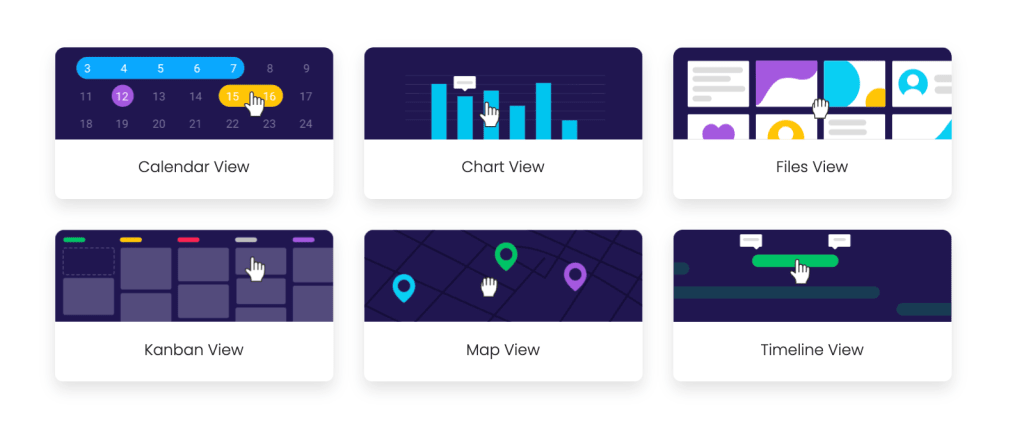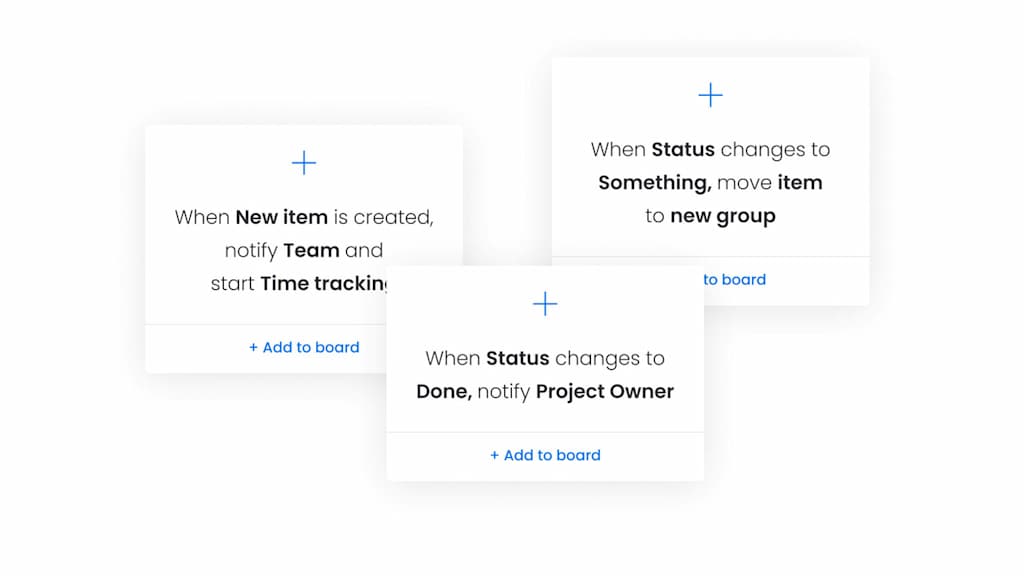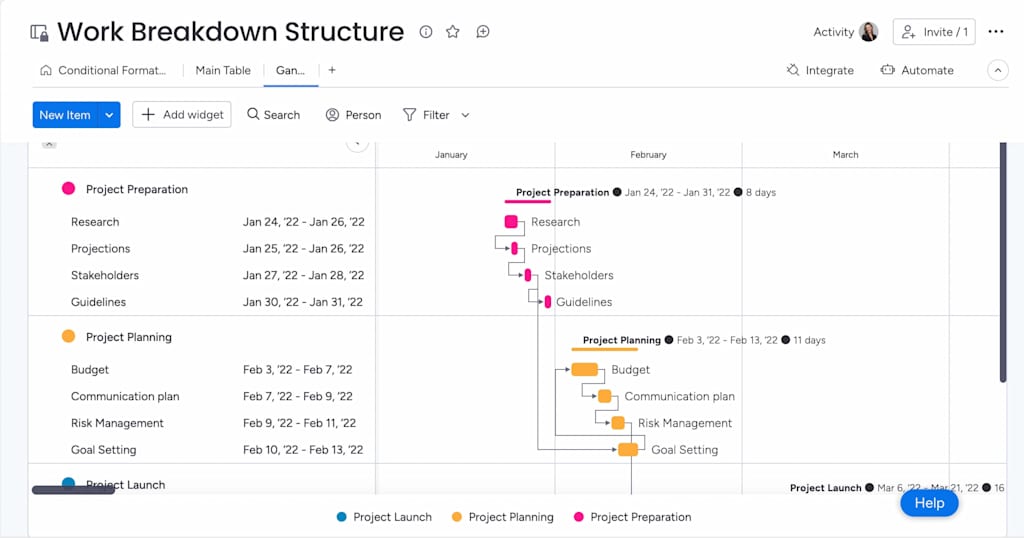Ever launched a project that felt doomed from day one? Unclear goals, misaligned teams, and creeping scope can often be traced back to a rushed or overlooked project initiation.
This critical first phase isn’t just a formality – it’s your best chance to set your project up for success.
This guide breaks down exactly how to master project initiation, ensuring clarity and buy-in from the start. Plus, we’ll show you how monday.com Work OS can transform these steps from daunting tasks into streamlined processes.
Ready to start your projects right?
What is project initiation?
Project initiation describes the formal process of recognizing that a new project exists and outlining the necessary documents and procedures that will set the stage for execution. This is step one of the 5-step project life cycle:
The 5 project management phases
- PHASE 1: Project Initiation
- PHASE 2: Project Planning
- PHASE 3: Project Execution
- PHASE 4: Project Monitoring and Control
- PHASE 5: Project Close-out
To give you more context , let’s look at project initiation through the two different lenses — project initiation activities and project initiation deliverables. Together, they make up something sometimes called a project checklist.
You can read more terms like this in our Project Management Glossary.
What is the difference between project initiation and project planning?
Now that you understand project initiation – the stage where you define your project broadly and get buy-in from stakeholders – how does project planning, the second phase of the project management lifecycle, differ?
While the terms sound interchangeable, project planning builds off of project initiation.
Your team might be tempted to jump straight into planning, but this can cause inefficiencies and rework. Project planning is where you develop detailed strategies, create specific, measurable, achievable, relevant, and time-bound (SMART) goals, and build out your project roadmap. This is where you’ll get into finer details, such as sprint planning, task assignments, and resource allocation.
But without the essential outputs and approvals of the initiation step (like a clear charter and stakeholder agreement), you might set inaccurate goals, or forget to loop in crucial stakeholders — and miss out on precious feedback. Think of initiation as laying the foundation, and planning as building the blueprint on that foundation.
What are the main activities and deliverables of project initiation?
The project initiation phase culminates in several key documents that formally define and authorize your project. These are your essential toolkit for a successful start.
1. Create a business case
Your business case clearly shows how project goals align with your company’s long-term mission — think of it as justifying the use of your technical, financial, and human resources for the specific project.
You should focus on business aspects above technical. This is because your business case will be used to garner support from upper management, answer any concerns, and ultimately warrant approval.
A strong business case typically includes an executive summary, problem/opportunity statement, proposed solution, financial analysis (costs, benefits, ROI), and alignment with strategic objectives. It’s crucial for securing initial buy-in and resources.
Imagine launching a new marketing campaign, your business case would outline expected ROI and resource needs, a process easily documented in a monday workdoc.
you can use monday workdocs to collaboratively draft, refine, and share your business case. Collaborate in real time, embed relevant data from your monday.com boards (like potential resource allocation or budget tracking), gather feedback, and maintain version control, all in one place.
We have over 300+ templates, some of which can be adapted for structuring your business case.

2. Conduct a feasibility study
Once you’ve secured leadership approval, you’ll want to assess how likely your project is to succeed. Your feasibility study identifies high-level project constraints and project assumptions to determine viability.
This study explores the following:
- Technical feasibility (can we build it?)
- Economic feasibility (is it cost-effective?)
- Legal feasibility (does it comply with laws?)
- Operational feasibility (can we run it?)
- Scheduling feasibility (can it be done in time?)
It helps prevent investment in projects doomed to fail.
You can use monday.com’s flexible boards to list potential resources, assess availability, and track costs associated with your project. Use over 15+ views, like workload or Gantt charts, to create helpful visualizations for resource allocation, project timelines, helping you asses scheduling and operational feasibility. You can also use our dashboards to consolidate this data for a clear overview.

3. Write a project charter
A project charter (sometimes called a team charter) is the formal document that authorizes the project and outlines the scope of work, objectives, and participants for your project.
It clearly delineates responsibilities, identifies the main stakeholders, outlines key goals, and – most importantly – defines the project manager’s authority.
A key part of the charter is defining the high-level project scope, which outlines project boundaries, deliverables, and objectives. While a detailed scope document comes later in planning, the charter establishes the initial understanding.
Core components of a winning project charter
A comprehensive project charter typically includes:
- Project purpose and justification
- Measurable project objectives and success criteria
- High-level requirements
- Key stakeholders and their roles
- Project manager assignment and authority level
- Summary budget and high-level milestones
- Assumptions and constraints
- Overall project risks (initial assessment)
This document serves as a foundational agreement between the project sponsor, key stakeholders, and the project team.
monday.com simplifies creating and managing your project charter. You can start with a pre-built project charter template or customize your own using monday workdocs. Embed key information, assign responsibilities for sections, and track its progress.
You can also leverage monday.com’s automations to streamline the project approval process. For instance, set up an automation to notify stakeholders when the charter is ready for review and another to alert the project manager once it’s approved.

4. Identify stakeholders and create a stakeholder register
Identifying and engaging your key stakeholders early is paramount. A stakeholder is anyone who has an interest in or can be affected by your project—they can be internal (like team members or executives) or external (like customers or suppliers).
Understanding their needs, expectations, and potential influence is crucial for stakeholder analysis and defining project objectives.
Your project scope document could include the following:
- Proposed external relationships
- Proposed internal relationships
- Comms plan
- Change management guidelines
- Post-project review plans
- Choice of project management methodology
Develop a basic communication plan, considering how and how often you’ll engage with different stakeholder groups. Tools like a stakeholder map or a stakeholder engagement assessment matrix can help you visualize and plan this.
Use a monday.com to create a board where you track stakeholder names, roles, interests, influence levels, and communication preferences. Use custom columns to help categorize them, and integrate with email and communication tools to streamline outreach. Use the updates and comment sections within items to keep communication records centralized.
5. Recruit the right team and establish a project office
With approvals in hand, it’s time to assemble your core project team and set up your initial project workspace. While detailed role assignments happen in planning, you can start loosely assigning roles and responsibilities to create a sense of accountability from the get-go. This is a project manager’s area of expertise.
If your organization has a project management office or PMO, consult them for guidance, templates, and best practices.
Create a dedicated board or workspace for your project to centralize all initiation documents, stakeholder information, and initial plans. Use the updates sections within items as real-time hubs for notes, decisions, and file sharing.
6. Hold a kickoff meeting and final review
The final step in the project initiation phase is to conduct a final review of all your initiation documents and hold a project kickoff meeting.
This meeting formally transitions the project from initiation to planning. It’s your chance to align all key stakeholders, present the project charter, clarify objectives, discuss high-level timelines, and address any initial questions or concerns.

Common pitfalls in project initiation (and how to sidestep them)
Even with the best intentions, project initiation can stumble. Here are some common pitfalls and how you can avoid them:
- Lack of Clarity on Objectives: If goals aren’t clear from the start, the project will lack direction. Solution: Ensure the business case and project charter clearly define SMART objectives.
- Insufficient Stakeholder Engagement: Failing to identify or engage key stakeholders can lead to a lack of buy-in or missed requirements. Solution: Conduct thorough stakeholder analysis and establish a communication plan early.
- Underestimating Project Complexity (Poor Feasibility): Optimism can overshadow realistic assessment of what it takes to succeed. Solution: Perform a diligent feasibility study covering technical, financial, and operational aspects.
- Scope Creep Begins Early: Allowing undefined or too many “nice-to-haves” into the initial scope. Solution: Clearly define project boundaries in the charter and establish a change control consideration process.
- No Formal Sign-off/Approval: Proceeding without formal authorization. Solution: Ensure the project charter is formally approved by the project sponsor.
- Rushing the Process: Treating initiation as a mere checkbox exercise. Solution: Allocate adequate time for each initiation step; a solid foundation saves time and resources later.
Using a structured approach and a platform like monday.com can help you navigate these pitfalls by providing templates, fostering collaboration, and ensuring clear documentation. Consider using a project initiation checklist to stay on track.
Optimize the way you kick off your projects with monday.com
Successful project initiation seamlessly transitions into the detailed project planning phase. With your project charter approved, stakeholders aligned, and initial workspace set up, you’re ready to dive deeper.
monday.com helps you carry the momentum forward. You can expand your initial project board into a detailed Work Breakdown Structure (WBS) using templates like the WBS Template. Visualize your project timeline, dependencies, and critical path with the Gantt View. The Workload View helps you manage team capacity effectively as you start assigning tasks.

By centralizing all this information, monday.com ensures a smooth handover from initiation to planning, keeping your team organized and on track from day one of the detailed work.
Mastering project initiation is fundamental to achieving project success, setting clear direction, and ensuring alignment across your team and stakeholders. It lays the critical groundwork for every subsequent phase of the project lifecycle.
With monday.com Work OS, you can transform the complexities of project initiation into a streamlined, collaborative, and transparent process. From drafting compelling business cases in monday workdocs to managing stakeholder engagement on dynamic boards and automating approval workflows, monday.com empowers you to kick off your projects with confidence and clarity.
FAQs
What are the key deliverables of the project initiation phase?
The primary deliverables are typically:
The Business Case: Justifies the need for the project.
The Feasibility Study: Assesses if the project is viable.
The Project Charter: Formally authorizes the project and outlines its high-level details. This is a key project initiation document (PID).
Who is responsible for project initiation?
Project initiation is often a collaborative effort. A project sponsor or initiator (e.g., a department head or client) usually champions the project and provides the business case. The project manager, once appointed, typically leads the development of the project charter and facilitates the feasibility study, working closely with key stakeholders.
What's the difference between a business case and a project charter?
A business case explains why a project is needed and its expected benefits, essentially justifying the investment. A project charter is created after the business case is approved; it formally authorizes the project's existence and gives the project manager authority to proceed. The charter outlines what the project is, who is involved, and its main objectives.
How long should project initiation typically take?
The duration of the project initiation phase varies greatly depending on the project's size, complexity, and organizational processes. It could range from a few days for small, internal projects to several weeks or even months for large, complex initiatives requiring extensive research and multiple approvals.
What are common mistakes to avoid during project initiation?
Common mistakes include unclear objectives, poor stakeholder engagement, inadequate feasibility analysis, rushing the process, and not obtaining formal approval (e.g., a signed project charter). Reviewing the elements of project initiation carefully can help avoid these.
How can monday.com help streamline my project initiation process?
monday.com helps by providing collaborative tools like monday workdocs for creating business cases and charters, customizable boards for feasibility studies and stakeholder registers, templates to get started quickly, automation for approval workflows, and a centralized platform to keep all initiation information for the project initiation steps organized and accessible.
